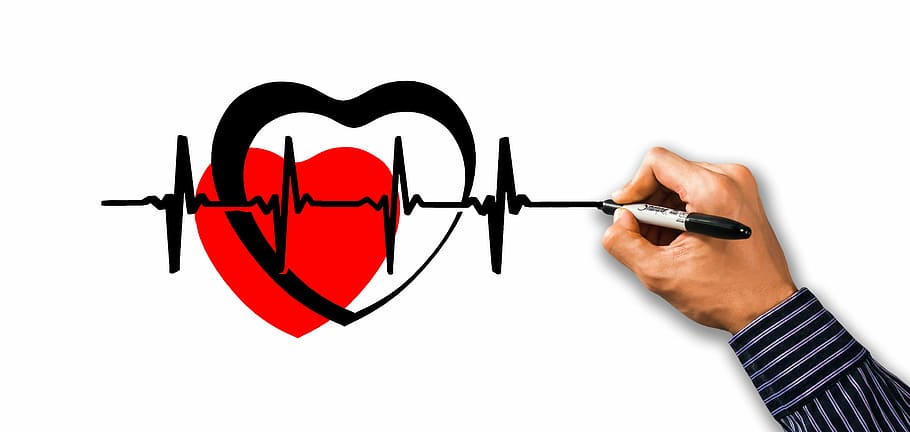In the medical field, both ECG and EEG are important tests that help physicians evaluate the electrical activity of the heart and brain, respectively. But what’s the distinction between them?
ECG is used to diagnose cardiac problems, whereas EEG is used to diagnose brain problems. The ECG can also be used to track the progression of a heart problem, presented as a graphical depiction of the electrical stimuli that travel through one’s heart.
So, which test is the best fit for you? Let’s take a closer look at them one by one.
Understanding ECGs, and What They Reveal?
ECGs or electrocardiograms are graph-paper representations of the charged impulses flowing through one’s heart. The test is rapid, common, and painfree test that can be used as part of a standard physical exam or as a screening for cardiac disease.
Generally, the test can be used for a variety of purposes, including:
1. Examine the cardiac rhythm for irregularities
2. Identify ischemia or decreased blood flow
3. Recognize cardiac arrest
4. Specific diagnosis of specific anomalies, such as an enlarged heart
5. Look for indicators of a past heart attack
6. Confirm that specific therapies, such as a pacemaker still function appropriately
What’s the Distinction Between an EEG and an ECG?
Seer Medical’s ECG-EEG test assesses electrical impulses in the body. While an EEG monitors brain impulses, an ECG, which may also be abbreviated as EKG, detects impulses in the heart. Doctors use EEGs to diagnose brain illnesses, strokes, nervous system issues, and brain cancers.
Generally, ECGs can reveal heart problems such as heart attacks, irregular heartbeats, and other cardiovascular issues. Specialized technicians operate the equipment for these tests, and physicians interpret the results.
Types of ECGs
To view different things, hospitals need to perform types of ECGs. Here are some of them:
1. Resting electrocardiogram – performed while the patient is laying down.
2. Exercise (stress) ECG – done while riding a standstill bike or running on a treadmill desk (controlled environment).
3. Ambulatory ECG – the wires are braced to a tiny machine worn around the waist and allowed to measure heart pulse for 24+ hours.
The probable problem will determine the sort of ECG required by your doctor.
Most recent, high-end smartwatches are all equipped with in-built electrocardiogram wires.
It notifies you of any heart rate or rhythm anomalies when used in conjunction with an app on your phone. Remember though that these don’t substitute your primary care provider’s specialist treatment or the more extensive ECG tests performed in a hospital.
Types of EEGs
The suspected reason for your symptoms will determine the sort of EEG requested by your doctor. Normally, the options available are:
1. Video EEG entails filming the patient while the test is being performed. The video footage, which is typically collected over a few days, aids in examining the EEG records.
2. Although uncommon, invasive EEG may be requested to determine whether surgery is a viable option for a person with complex epilepsy. Electrodes are implanted directly in the brain to determine the source of the seizures.
How is The EEG Exam Carried Out?
You’ll be sitting comfortably in a chair for the routine EEG. Approximately twenty tiny electrodes will be placed on your scalp with a special glue or paste.
How is The ECG test performed?
You are lying facing up on your back, peacefully, with 10 sensors connected to your ankles, chest area, and your wrists. The electrodes detect electrical impulses passing through the heart. Generally, the tests are performed in your doctor’s office, a neighborhood clinic, or a hospital.
What To Do Before The Exam
You don’t need to do much to prepare for the exam. Applying too many oils or moisturizers prior to the checkup, on the other hand, may prevent the electrodes from being in contact to the skin. It would be best to take off any clothing covering your ankles. If possible, put on a shirt with buttons that you can take off easily.
What Happens After?
The removal of these electrodes may cause some discomfort, much like taking off a plaster. Results won’t be available immediately since they need to go through an expert review first. After this, you’ll be advised on what steps to take to care for your health or if there were any abnormalities.
Conclusion
Health is wealth, so make sure you’re taking care of yourself. Remember, neither of these tests delivers electricity directly into your body. They simply record brain and heart activities and display them on a screen or graph paper.
Approach your local physician if you think you need medical assistance, and make your health a priority!

